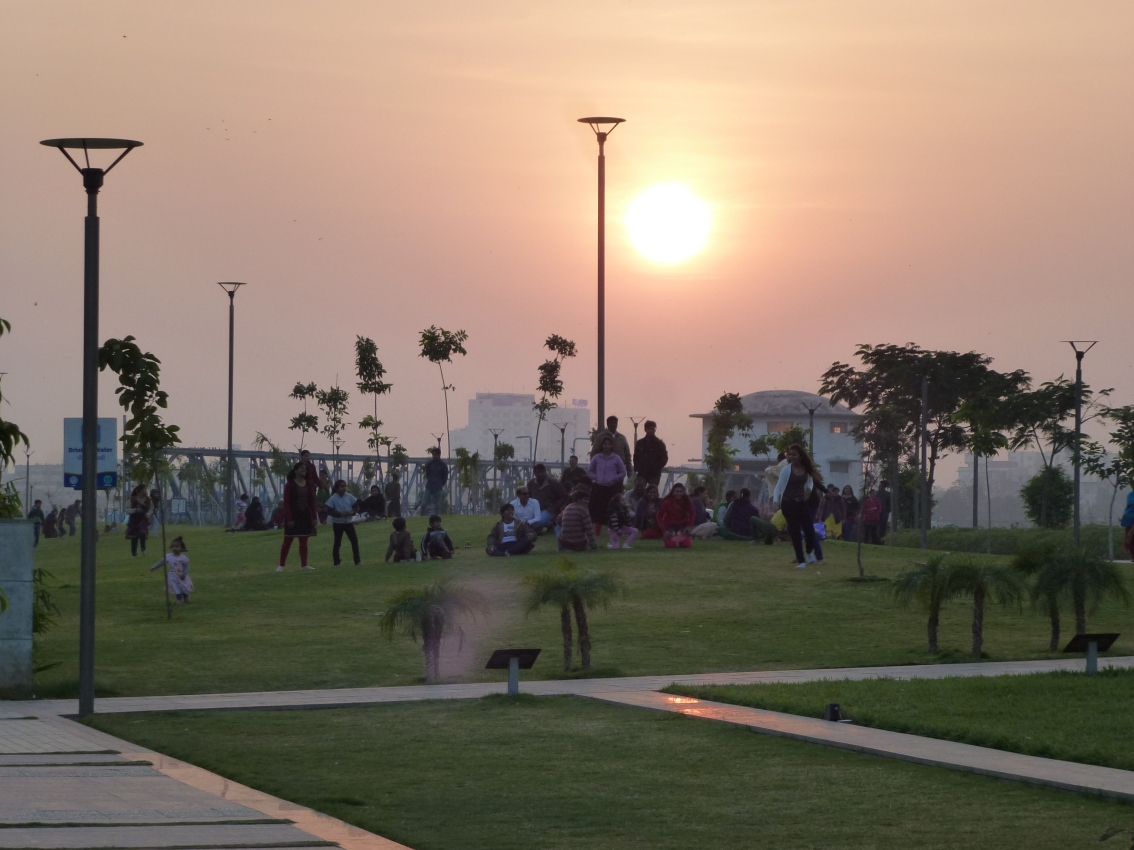Place, equity and inclusion along an Indian urban river…? ***
I have recently been doing some research in India with colleague Emily Redmond (link). While our research originally focused on green and open spaces in the city, we were drawn to the river and its place in urban India. Through site visits and interviews with professionals, we began to look at the effect that rapid urbanisation was having on the Sabarmati River in the city of Ahmedabad. The city’s planners and designers are using the river as a symbol of the city’s identity, describing the riverbank as an inclusive and accessible waterfront environment for the city’s 7 million+ residents.
Sabarmati Riverfront Park with a fee to pay on entry
The Riverfront Park has certainly made an impact across the city and across India winning various awards, but our observations and interview data indicate that beneath the gloss of the media coverage, reactions have not always been positive.
First of all, there has been huge controversy over the displacement of slum dwellers from the riverfront to make way for the development, and the controversial/contentious entry fee. It costs 10 rupees for over 12s to enter the park unless you happen to be partaking in a morning exercise routine (and a middle-class pursuit) between 6-8am and then it’s free. One might cynically argue that this keeps vocal voters at bay and keeps the ‘undesirables’ out by charging what some of our interviewees described as a ‘nominal’ amount to ensure it is kept clean and tidy. But ‘nominal’ may still be unaffordable for some.
So let’s look at the design. The underlying design of the riverfront itself was based on rejecting the nature of the Sabarmati as a monsoon river which floods and dries up at different times of the year. A hard-engineering approach was taken to pipe in a constant supply of water into the riverbed from elsewhere. The result (so far) is a harsh concrete riverside with limited connection to the river.
Concrete dominates on the riverside walk, down the steps from the park
According to some interviewees, the Sabarmati Riverfront Park was inspired by western examples of riverside parks and plazas such as the Seine or the Thames. But the lawns and decorative triangles of grass which dominate the park’s design require intense management and watering in such a climate.
Lawns and concrete dominate in the Sabarmati Riverfront Park
For us in the UK, the park is a democratic space for anyone and everyone to use. Our initial research suggests that this is not necessarily the case in India, and certainly not in Ahmedabad. This left us with a question that we have yet to answer: what is an Indian park and who is it for? Watch this space!
*** excerpts of this blog were published in Architecture + Design India, July 2014.
